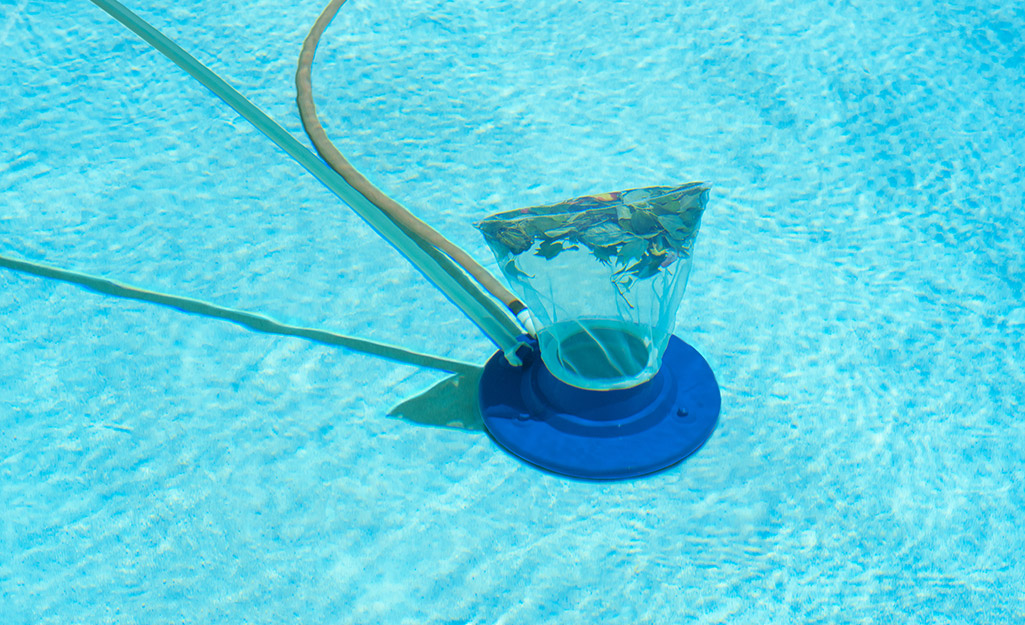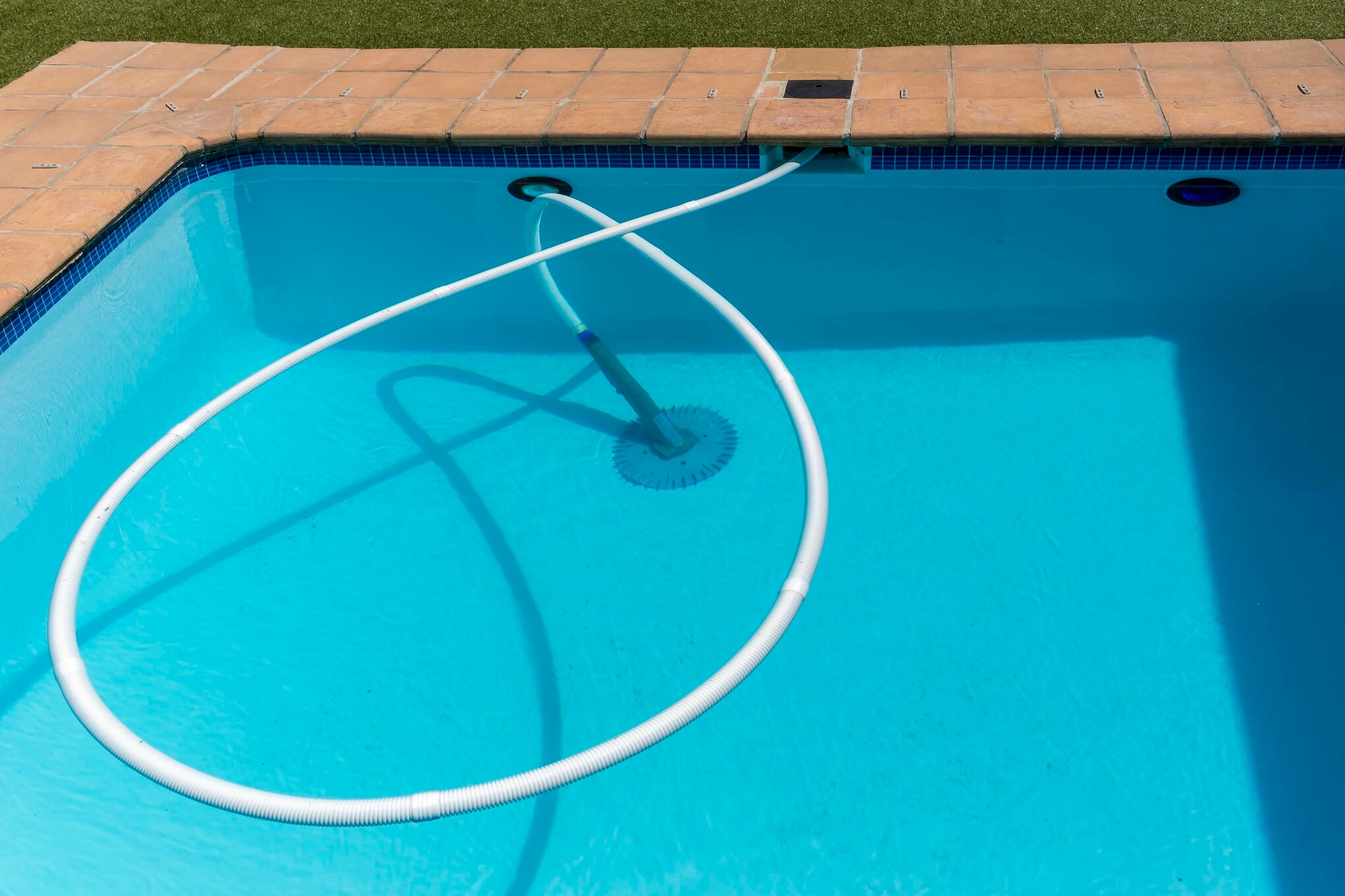Imagine stepping into your backyard, the sun shining brightly overhead, and you’re greeted by the sparkling sight of your swimming pool. It’s a haven of relaxation and fun, but maintaining its pristine condition can sometimes feel like a chore.
That’s where the swimming pool vacuum comes in. It’s not just a tool—it’s your secret weapon for effortless pool maintenance. But how does it actually work? Understanding the mechanics behind this handy device can transform your pool care routine from tedious to easy.
You’re about to discover the ins and outs of how a swimming pool vacuum works, and why it’s an essential part of your pool-cleaning arsenal. Stay with us, because this knowledge is the key to unlocking a cleaner, more enjoyable swimming experience for you and your family.

Credit: www.homedepot.com
Table of Contents
ToggleTypes Of Swimming Pool Vacuums
Manual pool vacuums need human power. They are simple to use. Attach the vacuum to a pole. Connect it to your pool’s filter system. It sucks up dirt and debris. You move it across the pool floor. This type is affordable. It works best for small pools. Cleaning takes time. But it keeps your pool clean.
Automatic vacuums move by themselves. They use the pool’s pump. They clean the pool floor and walls. No human effort is needed. They save time. They are more expensive than manual vacuums. They are great for medium-sized pools. They work even when you are not home. Pool cleaning becomes easy.
Robotic vacuums are advanced. They use electricity to work. They have smart features. These vacuums have sensors. They clean every corner of the pool. They are the most costly. They require less maintenance. They are suitable for large pools. Cleaning is fast and effective. Your pool stays spotless.

Credit: www.poolset.com.au
Components Of A Pool Vacuum
The vacuum headis like a brush for the pool. It moves over the pool floor and walls. This part helps pick up dirt and debris. It is important for a clean pool. The vacuum head connects to other parts to work properly.
The telescopic poleis long. It reaches far into the pool. You hold it to guide the vacuum head. It can be adjusted to different lengths. This pole makes cleaning easier and more comfortable.
The vacuum hoseis like a big straw. It connects the vacuum head to the skimmer. This hose carries dirt and water out of the pool. Keeping it straight helps the vacuum work best.
The skimmer connectionis where the hose connects. It helps pull water and dirt into the pool’s filter system. The skimmer makes sure the pool stays clean. It is an important part of the vacuum process.
The Vacuuming Process
First, gather all the necessary tools. You will need a vacuum head, a long hose, and a telescopic pole. Connect the vacuum head to the pole. Then, attach the hose to the vacuum head. Make sure everything is tight and secure. This setup helps in cleaning the pool properly.
Connect the hose to the skimmer or suction port. This lets the vacuum use the pool’s pump. Ensure there are no air bubbles in the hose. This keeps the suction strong. Submerge the hose slowly to avoid bubbles. A clear connection keeps the vacuum working well.
Start moving the vacuum head slowly across the pool floor. Work in a pattern to cover all areas. Keep your movements steady and slow. This helps in picking up all dirt and debris. Check the filter often to avoid clogs. Regular checks keep the system efficient.

Credit: www.swimmingpool.com
Maintenance And Troubleshooting
A swimming pool vacuum removes dirt and debris using a pump to create suction. It circulates water, pulling particles into a filter. Regular maintenance ensures optimal performance and prolongs the lifespan of your vacuum.
Cleaning The Vacuum Components
Regular cleaning keeps the vacuum working well. First, remove the vacuum head. Check for stuck debris. Clean the bristles using water. Next, inspect the hose. Look for clogs or tears. Clear blockages with a long stick. A clean hose helps suction. Finally, clean the filter. Rinse it with water. Dry it before putting it back. A clean filter ensures smooth operation.
Common Issues And Fixes
Some vacuums lose suction. Check the hose for leaks. Fix leaks with tape. Another issue is the vacuum not moving. Check the wheels for dirt. Clean them to allow smooth movement. If the vacuum doesn’t start, check the power source. Make sure it is plugged in. Reset any tripped switches. Proper checks fix most issues.
Ensuring Optimal Performance
Regular checks ensure the vacuum works well. Check the vacuum parts weekly. Clean the filter often. A clean filter boosts performance. Inspect the hose for holes. Fix holes quickly. Store the vacuum in a dry place. Keep it away from direct sunlight. Proper storage prolongs its life.
Benefits Of Using A Pool Vacuum
A pool vacuum keeps the water clean. It removes dirt and debris. Clean water is safe for swimming. It prevents germs and bacteria from growing. A vacuum makes the pool water clear. Everyone enjoys swimming more.
Cleaning a pool is hard work. A pool vacuum makes it easy. It saves time and effort. You don’t have to scrub the pool walls. The vacuum does the work for you. It is faster than cleaning by hand.
A clean pool helps equipment last longer. Dirt can damage pumps and filters. A pool vacuum removes dirt and debris. It keeps the pool equipment in good condition. This saves money on repairs and replacements. Your pool equipment works better and lasts longer.
Frequently Asked Questions
How Does A Pool Vacuum Work Step By Step?
A pool vacuum sucks debris using a pump. Attach the vacuum head to a telescopic pole. Connect the hose to the vacuum head. Submerge the hose to fill it with water. Attach the hose to the skimmer or vacuum port.
Move the vacuum across the pool floor to clean.
What Setting Should Your Pool Pump Be On When Vacuuming?
Set your pool pump to the “filter” setting while vacuuming. This allows debris to be captured in the filter system. Make sure all valves are open to ensure proper suction.
When Vacuuming A Pool, What Does The Vacuum Line Hook Up To?
The pool vacuum line connects to the pool pump or skimmer. This setup allows debris to be suctioned into the filtration system, keeping the pool clean. Ensure all connections are secure for optimal performance. Regular maintenance of the vacuum line is essential to avoid clogs and maintain effective cleaning.
How Does A Pool Vacuum Work With A Garden Hose?
A pool vacuum connects to a garden hose, using water pressure to create suction. This suction lifts debris from the pool floor. The debris collects in a filter bag attached to the vacuum. Simple assembly and water flow ensure effective cleaning, making maintenance easier.
Conclusion
Understanding how a swimming pool vacuum works simplifies pool maintenance. It ensures clear water and a welcoming environment. The vacuum removes dirt and debris efficiently. Regular use keeps the pool clean and safe. Easy to operate, it requires minimal effort.
It saves time and energy in pool care. Consider the vacuum type that suits your needs best. A clean pool enhances enjoyment and relaxation. With the right tools, pool upkeep becomes hassle-free. Dive in and enjoy your sparkling clean pool.


